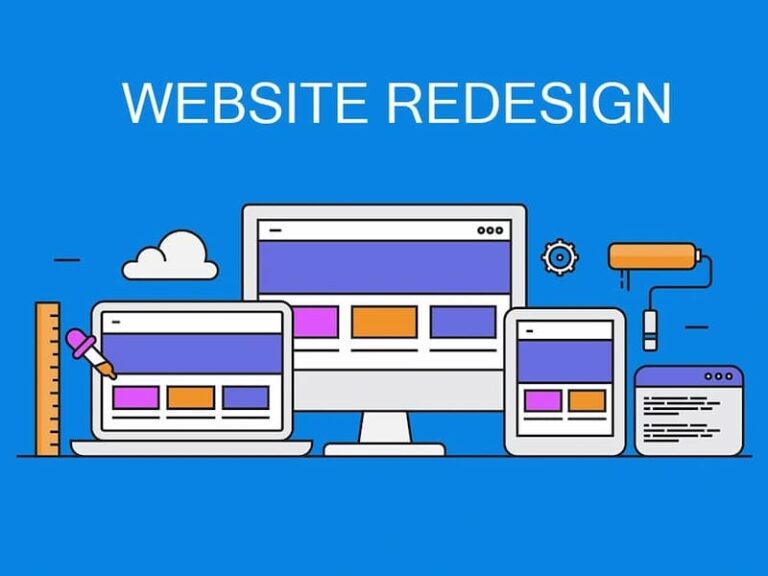Today, in the digital age, medical professionals need to enhance their online presence. So, healthcare website development has become essential. A good healthcare website gives important information to patients. It also makes scheduling appointments, refilling prescriptions, and talking to patients easier. Healthcare providers can use the latest technologies. They can use them to ensure their websites are easy to use, safe, and meet industry standards.
Making healthcare websites in 2024
-
Healthcare website development is important. We’ll discuss the benefits of a good website. It’s for your healthcare practice or organization.
-
Trends are shaping the industry. We’ll look at the latest trends in healthcare website development. This includes how technology is changing the patient experience.
-
We’ll give practical guidance on designing a website. It should be easy to navigate, informative, and cater to your patients’ needs.
-
We’ll cover the key points. They will help your website meet all privacy rules. The rules are for handling patient data. One of the key challenges in healthcare website development is ensuring compliance with regulatory standards, such as HIPAA in the United States.
-
We’ll offer strategies to turn website visitors into engaged patients. This includes scheduling appointments. It also includes requesting information or taking the next step in their healthcare journey.
-
The Development Process: We’ll guide you through the stages of website development. They go from planning and design to launch and ongoing maintenance.
By the end of this guide, you’ll know how to use website development. It can help build a better online presence for your healthcare practice. It can also improve the patient experience. The process of healthcare website development involves several critical steps, from understanding the unique needs of healthcare providers to implementing robust security measures that protect patient data.
Defining Your Needs
Before you start, you must define your website’s purpose. You must also define its target audience. This foundation will guide every aspect of your healthcare website development journey.
1. Identifying Your Target Audience:
-
Who are you trying to reach? Is it a general practice to target families? Or are you a specialist catering to a specific condition? Or, are you a hospital system serving a diverse community?
-
Consider the demographics—age, location, and technological fluency—of your ideal patient.
-
Understand their needs and expectations. What information are they looking for online? Do they want to schedule appointments, refill prescriptions, or access educational resources?
2. Setting SMART goals:
-
Specify the exact goals your website needs to achieve. Examples include attracting new patients, increasing appointment bookings, or improving patient education.
-
Establish metrics to track your progress. How will you measure success? For example, by website traffic, lead generation, or online appointments?
-
You can achieve simple goals. Do this by setting realistic objectives. Make sure they fit your resources and timeframe.
-
Make sure your goals fit the objectives of your healthcare practice or organization.
-
Define a timeframe for achieving your goals.
3. Understanding User Requirements:
-
Do user research. It’s going to help you understand how your target audience wants to use your website. This might involve surveys, focus groups, or competitor analysis.
-
Identify the pain points. What challenges do your patients face? They struggle to find information and access services online.
-
Focus on features. Based on user needs and your goals, determine which website features are essential. Examples include appointment scheduling, patient portals, online bill payment, and clear contact information.
By defining your target audience, setting clear goals, and understanding user needs, you’ll lay the groundwork for a successful healthcare website project. It’s going to meet patient needs and offer a good online experience.
Planning and Strategy
You understand your target audience and goals. Now, let’s delve into the planning. You will make strategic decisions. They will shape your healthcare website.
1. Choosing the Right Technology Stack:
The technology stack is the software and tools used to build your website. Here are key considerations for healthcare websites:.
-
The CMS provides an intuitive interface for users. It allows for easy content editing and updates. You don’t need coding expertise. Popular options for healthcare websites include WordPress, Drupal, and Joomla! It’s essential that they are HIPAA compliant.
-
Focus on robust security measures to safeguard sensitive patient data. This includes encryption, firewalls, and regular security audits.
-
Scalability is key. Choose a tech stack that can handle future growth in traffic and features.
-
Make sure your website is mobile-friendly. It should work on all devices, especially smartphones and tablets.
2. Creating wireframes and mockups:
Wireframes and mockups are visual representations of your website’s layout and functionality. They help you plan the user experience (UX) and information architecture. They do this before diving into development.
-
Wireframes are low-fidelity blueprints. They focus on the structure and flow of your website. They usually use basic shapes and lines. They use them to represent content sections and navigation.
-
Mockups are higher-fidelity representations. They have visual design elements, such as colors, fonts, and imagery. They provide a more realistic picture of how the final website will look and feel.
Benefits of Wireframing and Mockups:
-
Wireframes and mockups improve communication. They help stakeholders like developers, designers, and content creators.
-
Testing and changing wireframes and mockups will improve the user experience. It will ensure a friendly and easy website.
-
Lower development costs. Finding and fixing issues early saves time and resources in development.
Carefully plan your technology stack. Make well-defined wireframes and mockups. This will set the stage for a successful healthcare website project. It will meet both your technical needs and your patients’ expectations.
Design and User Experience (UX)
Now that you’ve set up your website, let’s focus on making a design. It will focus on both looks and user experience (UX). Here’s how to make a healthcare website. It should be both attractive and usable by all.
Key Design Elements for Medical Websites:
-
Healthcare websites should convey professionalism and inspire trust. Choose clean layouts. Use clear navigation and a calm, stable color scheme. Think blues, greens, and whites.
-
Use high-quality images. They should show doctors, staff, and the facility. This will make the site welcoming and personal. Use clear medical illustrations or infographics to simplify complex information.
-
Write in a way that’s easy to read. Use clear and short language. Avoid medical jargon. Choose larger fonts. Use enough contrast between text and background. Also, use proper spacing for readability.
-
Have clear calls to action (CTAs). Tell users what you want them to do. It might schedule an appointment. Or, it could request information or sign up for a patient portal. Use clear and concise CTAs with contrasting buttons.
Ensuring Accessibility and Responsiveness:
An easy-to-use website ensures everyone can access it well. Here’s what to consider:
-
Accessibility
-
Follow the Web Content Accessibility Guidelines (WCAG). They ensure your website is usable by people with disabilities. This includes features. For example, alternative text for images, keyboard navigation, and screen readers.
-
Consider color contrast. Ensure there’s enough contrast between text and background for people with poor vision.
-
-
Responsiveness
-
Today, your website must adapt to different screen sizes and devices. These include desktops, tablets, and smartphones.
-
Use responsive design techniques to ensure a positive user experience across all platforms.
-
Focus on these design elements and accessibility. Doing so will create a healthcare website that is not just pretty but also easy to use and inclusive. It will let all your patients easily access the information and services they need.
Development Process
You have a clear plan and a user-centric design. Now it’s time to make your healthcare website! This section covers development. It explores key features that improve patient engagement.
1. Front-End and Back-End Development:
-
Front-end development refers to the user-facing parts of your website. This includes the visual design, layout, and user interface (UI) elements. Developers use programming languages. Examples include HTML, CSS, and JavaScript. They use them to create an interactive and good-looking experience.
-
Back-End Development handles things behind the scenes. It deals with server logic, databases, and functionality. Back-end developers use languages like PHP, Python, or Java. They use them to ensure smooth operation and data security.
2. Integrating Essential Features:
-
A secure patient portal allows patients to manage their healthcare online. They can view medical records. They can request appointments and refill prescriptions. They can securely talk with their doctors.
-
Consider features like scheduling appointments. You can also access lab results, manage medications, and send secure messages.
-
-
A major trend in healthcare website development is the incorporation of telehealth features, allowing patients to consult with their doctors remotely. Telemedicine solutions allow patients to get healthcare consultations remotely. They use video conferencing or other digital channels.
-
Integrate a secure video conferencing platform that adheres to HIPAA regulations.
-
Additional Considerations for Development:
-
Content Management System (CMS) empowers healthcare staff. They can use it to easily update website content with no need coding knowledge.
-
Effective healthcare website development also requires a focus on search engine optimization (SEO) to ensure that the website ranks well on search engines.
Security and Compliance:
Healthcare websites handle sensitive patient data. Here’s what to focus on:
-
Your website must follow HIPAA regulations. They protect patient privacy and data security.
-
Use data encryption. Implement strong protocols to protect patient data. Do this during transmission and storage.
Collaborate with skilled developers. They understand the unique needs of healthcare websites. With them, you can build a secure, useful, and engaging website. It will empower patients and boost your practice’s online presence.
Testing and Quality Assurance
Before you launch your healthcare website, you need a thorough QA phase. This ensures your website works perfectly. It gives a good user experience. And it follows strict security and privacy rules.
1. Ensuring security and compliance:
-
Penetration testing simulates cyberattacks. It finds and fixes vulnerabilities in your website’s security.
-
Test data security. Verify that patient data is encrypted in transit and at rest. This follows HIPAA standards.
-
Conduct regular audits. They ensure your website follows all healthcare regulations. These include HIPAA and accessibility standards.
2. User testing and bug fixing:
-
Do usability testing. Recruit a diverse group of users. They will navigate the website to find any usability issues. Observe how they interact with features and identify areas for improvement.
-
This is about functional testing. Test all website features well. Make sure things like appointment scheduling, forms, and patient portals work smoothly.
-
Test your website with different web browsers and devices (desktops, tablets, and smartphones). Make sure it displays and works correctly.
-
Bug Fixing: Fix any bugs found during testing. This will ensure a smooth user experience.
More testing considerations:
-
Test your website’s loading speed. Check it under heavy traffic to ensure a good user experience.
-
Test for mobile responsiveness. Check that your website adapts well to different screen sizes and mobile devices.
Benefits of Rigorous Testing:
-
Proactive testing cuts the risk of breaches. It also protects patient data.
-
Fixing usability issues early on improves the user experience. It leads to a more user-friendly website for patients.
-
Catching bugs during testing is much cheaper than fixing them after launch.
By testing a lot and committing to security and compliance, you can ensure your healthcare website works well. It will also be secure. It will also be trustworthy and user-friendly. This will foster patient confidence and engagement.
Launch and Maintenance
The culmination of your hard work arrives at the launch of your healthcare website! But the journey doesn’t end there. This section explores website deployment. It covers the ongoing process of keeping your site fresh, secure, and set up for success.
1. Deploying the Website:
-
Choose a Reliable Hosting Provider. Pick a trusted web hosting provider. They should offer strong security, scalability, and great support.
-
Secure a domain name. It should be memorable, reflect your brand, and be easy for patients to find.
-
Your website is ready to launch! Testing is done and you’re confident in its functionality, security, and user experience.
2. Ongoing Updates and Improvements:
Your website needs to be up-to-date. It needs to keep up with new trends and technology. The healthcare industry does too. Here’s how to ensure continuous improvement:
-
Update the website often. Add fresh news, blog posts, and educational resources. They keep patients informed and engaged.
-
Install security patches and updates for your CMS, plugins, and underlying software. Do this to keep a secure environment and protect patient data.
-
Track website performance metrics like loading speed and user engagement. Address any performance issues that might negatively impact the user experience.
-
Use website analytics tools to learn about user behavior and website traffic. Use this data to find areas to improve. Use it to improve your website. You can improve for better conversions (e.g., appointment bookings, patient portal sign-ups).
-
Mobile usage continues to rise. Ensure your website stays optimized for mobile and delivers a seamless user experience on all platforms.
Additional Considerations:
-
SEO optimization is key. It improves your website’s ranking in search results. So, focus on relevant healthcare keywords.
-
Integrate social media buttons. They encourage patients to connect with your practice and share health information.
-
Make a digital marketing strategy to promote your new website. It will attract new patients. This might include online advertising, social media marketing, or content marketing efforts.
Take a proactive approach to website maintenance. Embrace continuous improvement. This will keep your healthcare website a valuable asset for your practice. It will help patients get more involved. It will attract new patients. And it will lead to better healthcare outcomes.
Cost Estimation
Knowing the factors that affect healthcare website development costs helps you. It lets you make a realistic budget and informed decisions during the project.
Factors Affecting Development Costs:
-
Websites vary in complexity. Simple ones with basic features cost less. They are cheaper than complex ones with advanced features. These include appointment scheduling, patient portals, e-commerce, and telemedicine.
-
A custom-designed website focuses on the user experience. It will typically cost more than a website built with a pre-designed template.
-
The number and complexity of features directly impact development costs. Adding appointment scheduling, online forms, and secure patient portals requires more development work.
-
The technology stack can affect development costs. It includes the specific programming languages, frameworks, and content management systems (CMS) used. Open-source options might be more cost-effective initially, but consider ongoing maintenance needs.
-
The location of your development team can affect costs. Rates for developers vary depending on geographical location and experience level.
-
Content Creation: High-quality content adds to the project cost. This includes things like medical illustrations, professional photos, and engaging videos.
Budgeting for Your Healthcare Web Project:
-
Define your needs and goals. State the specific functions you want your website to perform. Also, list the key features. This will guide your budget allocation.
-
Get quotes from different development companies. Be sure to provide a clear description of your project’s scope and desired functionalities.
-
Consider ongoing costs. Include website hosting, domain registration, maintenance fees, and content creation expenses.
-
Prioritize quality and value over the cheapest option. A good website can be a long-term investment. It will generate a positive return for your practice.
You can divide resources well and ensure your healthcare website project succeeds. How? By understanding the cost factors and budgeting strategically.
Additional Tips:
-
Divide your project into smaller, more manageable phases. This allows for better budgeting and cost control.
-
Unrealistic deadlines can lead to rushed development and compromise quality. Allow ample time for each stage of the project.
-
Communication is key. Keep talking to your team during the project. This will help avoid misunderstandings and costly revisions.
Follow these guidelines. You can navigate the web development process with confidence. You will create a healthcare website that meets your needs. It will stay within your budget and deliver great value to your patients and your practice.
Conclusion
BitCodeSolution might be a good fit for your needs. It makes a healthcare website that meets your needs. It stays within your budget and gives great value to your patients and your practice. This best healthcare website development company, ensures top-notch security and user-friendly design. If you’re looking to enhance your online medical services, trust BitCodeSolution, the best healthcare website development provider.
Get a quote and discuss your project in detail. See if they can clearly explain their development process and how they would approach your specific needs.
Contact : 92) 336 73 66 752
Email : info@bitcodesolution.com
FAQS
Who should read this guide?
This guide is for anyone involved in developing or managing a healthcare website, including healthcare providers, marketing professionals, and web developers.
Why is a website important for healthcare providers?
A well-designed website attracts new patients, improves patient engagement, and allows you to deliver better care online.
What are the benefits of using this guide?
This guide provides a comprehensive overview of healthcare website development in 2024, including the latest trends, best practices, and essential considerations for building a successful website.
How much does it cost to develop a healthcare website?
Costs vary depending on complexity, features, and chosen development team. This guide explores factors affecting website development costs.
How long does it take to develop a healthcare website?
The timeframe depends on project scope and complexity. Simpler websites can take a few weeks, while feature-rich sites may take several months.




